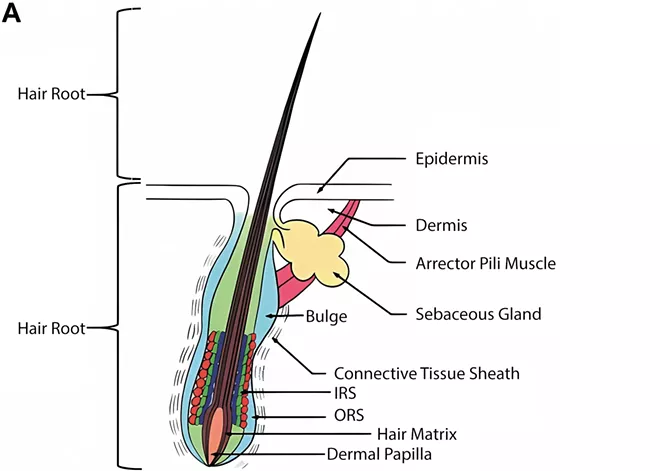Imagine going for your annual wellness checkup, and instead of a blood draw, the nurse simply plucks a few strands of hair. Through a computer analysis of those strands, maybe even within the short timeframe of your visit, the medical team is able to determine the presence of health anomalies that might require intervention.
Researchers at Washington State University have developed a new method of hair analysis that could lend itself to applications like that in the future. The method uses artificial intelligence to process large volumes of high-resolution microscope images of hair fibers and compile data such as the color, shape, width and length of each strand. Those and other parameters could potentially offer telling clues about certain characteristics of the hair donor.
The new method arose out of the work that Jasson Makkar, a molecular biosciences graduate student, was doing for WSU's College of Veterinary Medicine. He and his research team were studying the effects — the "downstream phenotype" in his more technical description — of manipulating a gene that influences hair follicle growth in mice.
"If you look at the fur, you can see that there's something slightly off about it, but there's no way of quantifying that just based off looking at it. So we wanted to have an objective measurement of what those differences were," he says.
To conduct those measurements, Makkar had the painstaking task of manually arranging and measuring tubes of hair.
"I was sitting for many hours taking images under the microscope and then taking those images home. There were nights that I just sat there counting fibers," he says.
And it was tedium, that age-old driver of innovation, that spurred him to find a better method. In the fall of 2021, a year before chatGPT launched and pushed AI into the headlines, he began exploring ways to automate the process.

"I was reading articles about how they were using computer vision for detecting objects when trying to develop automated driving and things like that. So I tried a couple of different packages that were available where they had pre-trained models. And none of them seemed to work really well for detecting hair fibers," he says.
One of the problems that Makkar kept running into was that the hair fibers don't all lie uniformly. Even if you were able to arrange them in the same direction in a single image, it's difficult to replicate that exact same orientation across an entire series of images. However, without a consistent orientation, the computer models had a hard time recognizing and quantifying the different fibers.
That's when Makkar discovered that a similar problem had been overcome in satellite imagery.
"With satellite images, you have a similar issue where everything isn't really organized along nice and easy axes. If you take a sky-view image of a car or a boat, you can't necessarily control that the car is going to be facing perfectly vertically or perfectly horizontally in the image," he explains.
After finding computer vision models that had been developed to identify objects in satellite images, he then modified and retrained them to analyze microscope images of hair fibers. Powered by Kamiak, WSU's high-performance computing cluster, the resulting AI model can process images at speed via a deep learning algorithm.
Although Makkar developed his solution for research on mice, he says the basic framework can be extended to any mammal — including humans.
"It's really hard to say what this is limited to. Based on physical characteristics alone, there are diseases that have physical hair fiber anomalies. You could have premature hair graying with dementia, for example, or you can have hair loss with a number of autoimmune diseases. Or you can have particular hair phenotypes that are associated with genetic disorders in children."
Associate professor Ryan Driskell, who heads the research team, also sees a lot of promise in the AI model that he casually describes as a "hair follicle chatGPT."
"A lot of us think that hair follicles are trash on the floor, right? They're a nuisance. You vacuum them up. But there's a lot of information in the hair follicle," he says. In addition to its innate characteristics, hair can even provide insight into an individual's external environment — a concept known in scientific circles as the exposome — through the presence of surface toxins or UV damage.
As a result, if simple hair samples could be used in lieu of some biopsies or invasive screenings, it could improve rural medicine and take some of the anxiety out of health care visits.

Furthermore, in addition to flagging potential health issues, this technology could have forensic applications. Not only could microscopic hair analysis indicate what kind of animal a particular hair fiber came from, it could also help establish whether it came from the back, head or arm.
Albeit still in its infancy, Driskell says this AI model offers a starting point for "creating a better understanding of what hair is across humanity."
"I'm honestly quite surprised it's been underutilized for so long," says Makkar.
























